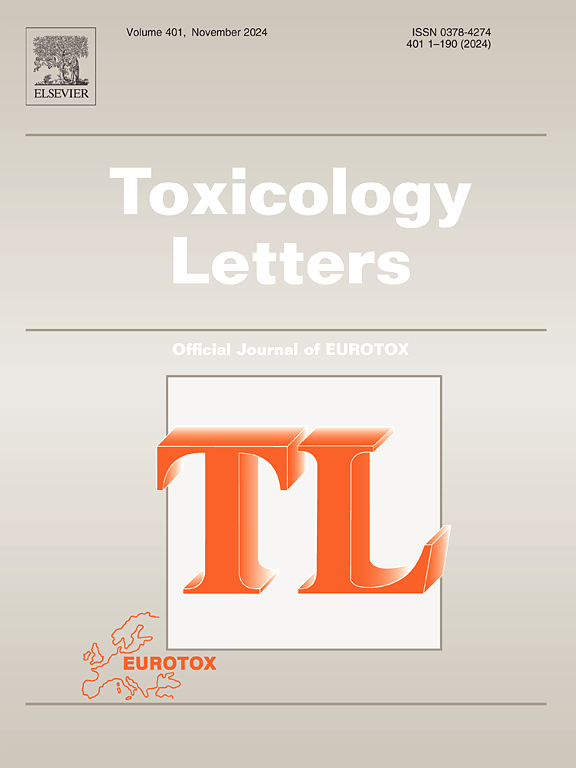HepG2/C3A 球体全转录组动态的时程特征及其毒理学意义
IF 2.9
3区 医学
Q2 TOXICOLOGY
引用次数: 0
摘要
与生理相关的体外模型是预测性毒理学的首要任务,以取代和/或减少动物实验。与体内代谢相比,许多单层培养的永生化人类肝细胞系的毒物代谢受到影响,这限制了它们的生理相关性。然而,最近在三维环境(如球形)中培养肝细胞以更好地模拟体内条件的努力,可能会提高人类肝细胞系的毒物代谢。在本研究中,我们研究了在Clinostat系统(CelVivo)中培养的HepG2/C3A肝癌细胞球体转录组的动态变化,以深入了解该模型的代谢能力与球体大小和培养时间的关系。我们结合转录组的时间序列(0、3、7、10、14、21、28 天)(TempO-Seq,BioSpyder),评估了从最初球形细胞播种到连续培养 35 天的形态变化(大小、坏死核心)、细胞健康状况和增殖率。在球体内生长的 HepG2/C3A 的表型特征与单层生长相当,直到第 12 天左右(第 10-14 天),细胞倍增率显著下降,与此同时,细胞增殖和细胞周期通路也在这段时间内下调。转录组数据的主成分分析表明,第 3 天、第 7 天和第 10 天的球形体与第 14 天、第 21 天和第 28 天的球形体明显不同,这支持了长期三维球形体培养过程中的生物转化时间点。与单层培养物相比,编码参与毒物代谢和转运的细胞成分的基因表达量在球形培养物的早期时间点迅速增加,在第 7 天或第 10 天达到峰值,随着培养时间的延长,表达量逐渐下降,这表明暴露研究的代谢反应时间窗口最为敏感。总之,我们提供了有关 HepG2/C3A 三维球形培养物随着时间推移的细胞和分子特征的基线信息,尤其侧重于毒物代谢能力动态和细胞生长。本文章由计算机程序翻译,如有差异,请以英文原文为准。
Time-course characterization of whole-transcriptome dynamics of HepG2/C3A spheroids and its toxicological implications
Physiologically relevant in vitro models are a priority in predictive toxicology to replace and/or reduce animal experiments. The compromised toxicant metabolism of many immortalized human liver cell lines grown as monolayers as compared to in vivo metabolism limits their physiological relevance. However, recent efforts to culture liver cells in a 3D environment, such as spheroids, to better mimic the in vivo conditions, may enhance the toxicant metabolism of human liver cell lines. In this study, we characterized the dynamic changes in the transcriptome of HepG2/C3A hepatocarcinoma cell spheroids maintained in a clinostat system (CelVivo) to gain insight into the metabolic capacity of this model as a function of spheroid size and culture time. We assessed morphological changes (size, necrotic core), cell health, and proliferation rate from initial spheroid seeding to 35 days of continuous culture in conjunction with a time-course (0, 3, 7, 10, 14, 21, 28 days) of the transcriptome (TempO-Seq, BioSpyder). The phenotypic characteristics of HepG2/C3A growing in spheroids were comparable to monolayer growth until ∼Day 12 (Day 10–14) when a significant decrease in cell doubling rate was noted which was concurrent with down-regulation of cell proliferation and cell cycle pathways over this time period. Principal component analysis of the transcriptome data suggests that the Day 3, 7, and 10 spheroids are pronouncedly different from the Day 14, 21, and 28 spheroids in support of a biological transition time point during the long-term 3D spheroid cultures. The expression of genes encoding cellular components involved in toxicant metabolism and transport rapidly increased during the early time points of spheroids to peak at Day 7 or Day 10 as compared to monolayer cultures with a gradual decrease in expression with further culture, suggesting the most metabolically responsive time window for exposure studies. Overall, we provide baseline information on the cellular and molecular characterization, with a particular focus on toxicant metabolic capacity dynamics and cell growth, of HepG2/C3A 3D spheroid cultures over time.
求助全文
通过发布文献求助,成功后即可免费获取论文全文。
去求助
来源期刊

Toxicology letters
医学-毒理学
CiteScore
7.10
自引率
2.90%
发文量
897
审稿时长
33 days
期刊介绍:
An international journal for the rapid publication of novel reports on a range of aspects of toxicology, especially mechanisms of toxicity.
 求助内容:
求助内容: 应助结果提醒方式:
应助结果提醒方式:


